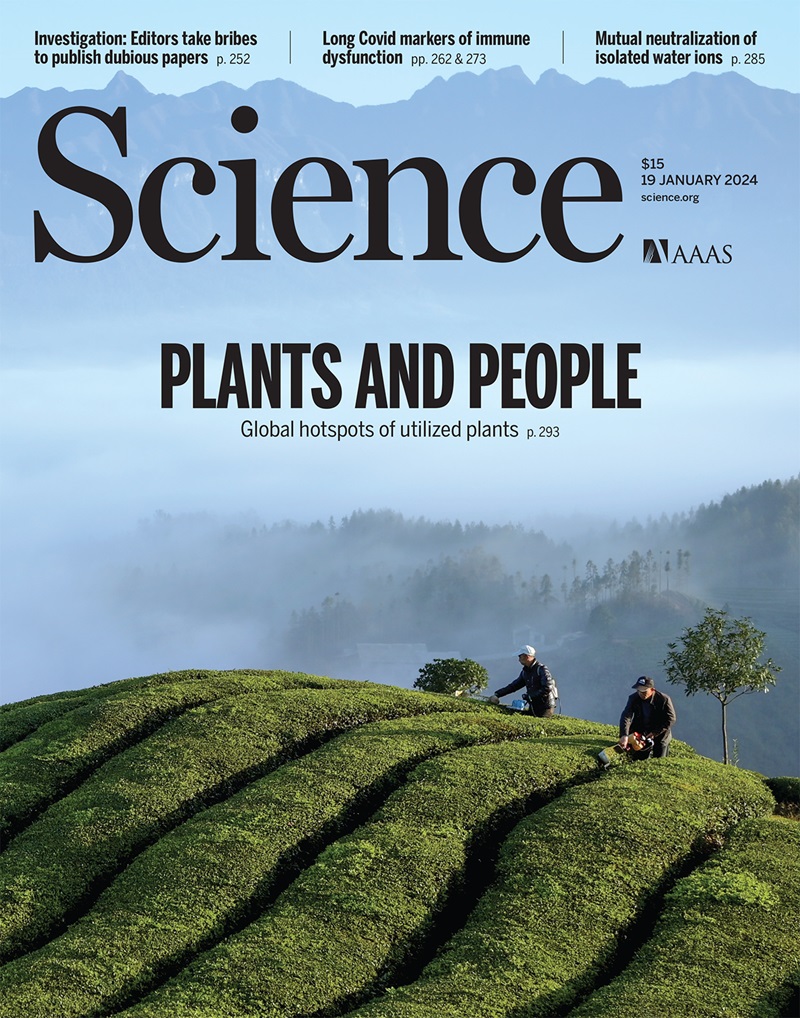Food perception promotes phosphorylation of MFFS131 and mitochondrial fragmentation in liver
IF 44.7
1区 综合性期刊
Q1 MULTIDISCIPLINARY SCIENCES
引用次数: 0
Abstract
Liver mitochondria play a central role in metabolic adaptations to changing nutritional states, yet their dynamic regulation upon anticipated changes in nutrient availability has remained unaddressed. Here, we found that sensory food perception rapidly induced mitochondrial fragmentation in the liver through protein kinase B/AKT (AKT)–dependent phosphorylation of serine 131 of the mitochondrial fission factor (MFFS131). This response was mediated by activation of hypothalamic pro-opiomelanocortin (POMC)–expressing neurons. A nonphosphorylatable MFFS131G knock-in mutation abrogated AKT-induced mitochondrial fragmentation in vitro. In vivo, MFFS131G knock-in mice displayed altered liver mitochondrial dynamics and impaired insulin-stimulated suppression of hepatic glucose production. Thus, rapid activation of a hypothalamus–liver axis can adapt mitochondrial function to anticipated changes of nutritional state in control of hepatic glucose metabolism.
食物感知促进肝脏中 MFFS131 的磷酸化和线粒体破碎
肝脏线粒体在适应不断变化的营养状态的新陈代谢过程中发挥着核心作用,但它们在营养供应预期变化时的动态调节问题仍未得到解决。在这里,我们发现感官食物知觉通过蛋白激酶 B/AKT (AKT)依赖的线粒体裂解因子(MFFS131)丝氨酸 131 磷酸化迅速诱导肝脏线粒体破碎。这种反应是通过激活下丘脑表达前绒毛膜促皮质素(POMC)的神经元介导的。在体外,非磷酸化的 MFFS131G 基因敲入突变会减弱 AKT 诱导的线粒体破碎。在体内,MFFS131G 基因敲入小鼠显示出肝脏线粒体动力学的改变,以及胰岛素刺激下抑制肝脏葡萄糖产生的功能受损。因此,快速激活下丘脑-肝脏轴可使线粒体功能适应预期的营养状态变化,从而控制肝脏葡萄糖代谢。
本文章由计算机程序翻译,如有差异,请以英文原文为准。
求助全文
约1分钟内获得全文
求助全文
来源期刊

Science
综合性期刊-综合性期刊
CiteScore
61.10
自引率
0.90%
发文量
0
审稿时长
2.1 months
期刊介绍:
Science is a leading outlet for scientific news, commentary, and cutting-edge research. Through its print and online incarnations, Science reaches an estimated worldwide readership of more than one million. Science’s authorship is global too, and its articles consistently rank among the world's most cited research.
Science serves as a forum for discussion of important issues related to the advancement of science by publishing material on which a consensus has been reached as well as including the presentation of minority or conflicting points of view. Accordingly, all articles published in Science—including editorials, news and comment, and book reviews—are signed and reflect the individual views of the authors and not official points of view adopted by AAAS or the institutions with which the authors are affiliated.
Science seeks to publish those papers that are most influential in their fields or across fields and that will significantly advance scientific understanding. Selected papers should present novel and broadly important data, syntheses, or concepts. They should merit recognition by the wider scientific community and general public provided by publication in Science, beyond that provided by specialty journals. Science welcomes submissions from all fields of science and from any source. The editors are committed to the prompt evaluation and publication of submitted papers while upholding high standards that support reproducibility of published research. Science is published weekly; selected papers are published online ahead of print.
 求助内容:
求助内容: 应助结果提醒方式:
应助结果提醒方式:


